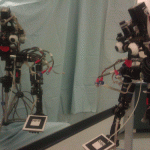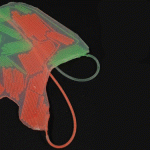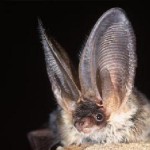
The Peacock mantis shrimp has two extremely strong hammer clubs. Image: S. Baron
Researchers are looking at the club of the Peacock mantis shrimp as inspiration for designing strong materials.
Sea creatures with hard shells and exoskeletons are safe from most predators. But nature has worked in favour of the highly aggressive Peacock mantis shrimp (Odontodactylus scyllarus), which can break through extremely hard structures with a swift strike of its formidable dactyl club. In a study published in Science, an international team of researchers have worked out what makes the shrimps’ club so tough and why it can withstand repetitive high-velocity impacts.
James Weaver, from Harvard University, and the research team used a range of specialised microscopes — including electron micrographs — to look at the structure of the hammer-club. They found that it doesn’t have the same material composition or mechanical properties all the way through, and it can actually be separated into three distinct regions. This is the characteristic that they think explains the clubs high strength and durability.
Cross-sectional analysis showed that the outer region of the club, called the impact zone, is mostly made up of a hard mineral called hydroxyapatite. The next layer, called the periodic region, is a less stiff structure lacking any defined crystallinity. The innermost region of the club is a chitinous organic matrix, which is organised in fibril sheets stacked at different angles, providing excellent fracture resistance by making cracks continuously change direction.
The Peacock mantis shrimp belongs to a class of ancient marine crustaceans called Malacostraca, which also includes lobsters, krill and crabs. They have excellent sight due to a highly complex visual system and have at least ten types of photoreceptors (humans only have three). They are mostly solitary and hide away in burrows, but when it comes to hunting or fighting they are extremely aggressive and can smash through mollusc shells, crab exoskeletons, and even the glass wall of an aquarium tank.
“I am working with mantis shrimps right now and I know only too painfully how hard they can hit!” said Justin Marshall from the University of Tasmania. He thinks the current study is very interesting and that the more we know about the clubs’ fascinating cuticle structure the better we can develop high strength materials.
The authors of the paper explain that the structural lessons learnt from the mantis shrimp club could provide important design insights into the development of durable materials. They imagine tough ceramic-organic hybrid materials will be made based on the club structure and used in applications where they are subjected to extreme and repetitive loading.
Source: Science






